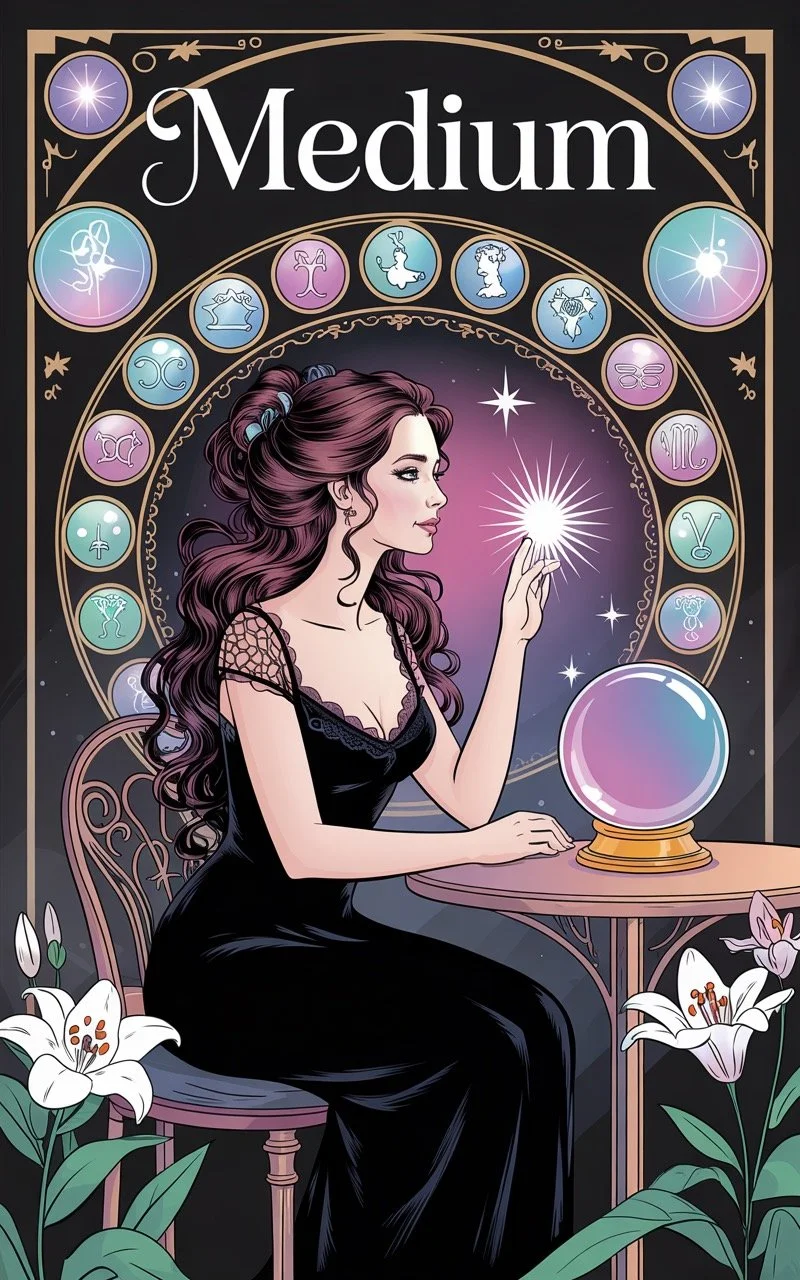MEDIUM
A medium (from Latin medium, meaning “middle”, “intermediary” or “channel”) is a person who is believed—particularly within spiritualism, occult traditions, and certain religious or mystical systems—to have the ability to communicate with spirits, non-physical entities, or the souls of the deceased. A medium serves as a bridge between the physical world and the spiritual or non-material realms.
The concept of mediumship has deep roots in ancient religious and shamanic practices. Shamans, oracles, seers, and priests in many ancient cultures (such as Egypt, Greece, India, Africa, and the indigenous Americas) acted in roles similar to mediums—interacting with spirits, deities, or ancestral forces.
The modern notion of the medium as a communicator with the dead emerged in the 19th century with the rise of spiritualism. The movement gained traction particularly after the 1848 claims of the Fox sisters in the United States, who reported spirit contact through rapping noises.
3. Types of Mediums
Mediums are generally classified based on how they receive or relay spiritual information:
Sensory mediums – perceive the presence of spirits through sensations (e.g., chills, heaviness, vibrations).
Clairvoyants – “see” visions, symbols, or the spirits themselves.
Clairaudients – “hear” voices, messages, or sounds from non-physical sources.
Claircognizants – receive sudden insights or knowledge without logical reasoning.
Trance mediums – enter altered states of consciousness to “channel” messages from spirits.
Psychographic mediums (automatic writing) – write messages claimed to be dictated by spirits, often without conscious control.
Physical mediums – reportedly cause paranormal physical phenomena (e.g., levitating objects, audible spirit voices).
4. Methods of Mediumship
Mediums employ a range of techniques to access or interpret spiritual messages:
Séances – group sessions intended to contact spirits.
Divination tools – such as tarot cards, runes, or crystal balls.
Meditation and ritual – to open spiritual awareness or create “connection.”
Automatic writing – writing messages from spirits involuntarily.
Hypnosis or trance – entering altered states to receive communication.
Psychometry – reading energy from personal items or photographs.
5. Scientific Perspective
The scientific community remains highly skeptical of mediumship. As of today, there is no empirical evidenceconfirming the existence of spirits or communication with the dead under controlled, repeatable scientific conditions.
Psychological and neuroscientific research suggests that mediumistic experiences may be linked to:
suggestion and belief;
dissociative states;
memory, imagination, and hypnotic susceptibility;
emotional needs, especially during grief;
cognitive biases (e.g., the Forer/Barnum effect).
6. Criticism and Skepticism
Mediumship has been widely criticized for:
Fraudulent practices – cases of deliberate deception for financial gain.
Manipulation of the grieving – targeting vulnerable individuals.
Lack of replicability – phenomena fail under scientific testing.
Notable skeptics and debunkers include Harry Houdini, James Randi, and Derren Brown, all of whom exposed fraudulent mediumship practices.
7. Mediumship in Culture
Mediums feature prominently in popular culture—films, novels, television, and games. They are often portrayed as mysterious figures with tragic or supernatural destinies. Notable examples include Ghost, The Sixth Sense, Medium, and Poltergeist.
In some religious traditions—such as Brazilian Umbanda and Kardecist Spiritism—mediumship is regarded as a sacred spiritual practice and an important means of moral development and healing.
8. See Also
Spiritualism
Clairvoyance
Trance
Paranormal phenomena
Shamanism
Astral projection


